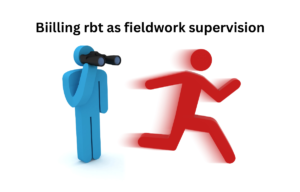The real estate landscape is continuously evolving, and 2024 is no exception. This year, the industry is seeing a convergence of technological advancements, demographic shifts, and economic factors that are reshaping the market in unprecedented ways. Whether you are a buyer, seller, investor, or industry professional, staying informed about these trends is crucial for making strategic decisions. In this article, we’ll explore the most significant real estate trends of 2024, providing insights into how these changes might impact your approach to the housing market.
- Housing market
- Property values
- Real estate investment
- Housing demand
- Mortgage rates
- Sustainable homes
- Smart home technology
What Are the Key Real Estate Trends Emerging in 2024?
The real estate trends in 2024 are heavily influenced by a mix of technological advancements, economic shifts, and changing consumer preferences. Most significant trend is the continued migration from urban areas to suburban and rural regions. This shift, which began during the pandemic, is driven by the increased flexibility of remote work, allowing people to live further from city centers without sacrificing their jobs. Suburban areas are seeing a surge in demand, leading to rising home prices and a tighter inventory.
Critical trend is the growing emphasis on sustainability and energy efficiency in home design. Buyers are increasingly interested in properties equipped with eco-friendly features, solar panels, energy-efficient appliances, and sustainable building materials. This trend is not just about reducing environmental impact; it also aligns with financial incentives, tax breaks and lower utility costs, making these homes more attractive to a broader audience.
Technological integration in real estate trends continues to grow, with more buyers and sellers leveraging online tools for virtual tours, digital transactions, and even AI-driven home valuations. This trend is making the home-buying process more accessible and efficient, particularly for younger, tech-savvy generations who prefer to handle transactions online.
How is Technology Influencing Real Estate in 2024?
In 2024, technology is profoundly transforming the real estate sector, particularly through the adoption of artificial intelligence (AI) and augmented reality (AR). AI is being used to streamline various aspects of real estate trends transactions, from predictive analytics that help investors identify lucrative opportunities to chatbots that enhance customer service by providing instant responses to inquiries. AI is also playing a crucial role in automating property valuations, marketing strategies, and lead generation, making the entire process more efficient.
Augmented reality is another technology reshaping the industry, particularly in property visualization. AR tools allow potential buyers to take virtual tours of properties, visualize renovations before they are completed, and even see how different furniture layouts might look in a space. This technology is especially valuable in luxury markets, where personalized and immersive experiences can significantly influence buying decisions.
The use of blockchain technology for secure and transparent real estate trends transactions is gaining traction. Blockchain can streamline the transaction process by reducing the need for intermediaries, cutting down on paperwork, and ensuring that all parties have access to the same, immutable record of the transaction. This technology is expected to continue evolving, reducing friction in Real estate trends deals.
Why Are Home Prices Fluctuating Across Different Regions?
The fluctuation of home prices across different regions in 2024 is primarily driven by a combination of economic conditions, population movements, and local market factors. In areas like coastal Florida, where climate risks, hurricanes and rising sea levels are becoming more pronounced, home prices are expected to decline. These regions are also facing higher home insurance costs, making them less attractive to buyers and investors.
Conversely, regions that offer greater climate resilience and affordability, parts of the Midwest and Northeast, are seeing an uptick in home prices. These areas, often referred to as “climate havens,” are becoming increasingly popular as people seek to relocate from high-risk coastal areas. The influx of new residents into these markets is driving demand and pushing up property values.
Economic factors, interest rates and inflation are influencing regional home prices. High mortgage rates, which are expected to remain elevated in 2024, are dampening demand in some markets, particularly those where affordability is already stretched. However, in markets where housing is still relatively affordable, demand remains strong, contributing to rising prices
The ongoing shift from urban centers to suburban and rural areas is significantly impacting the housing market in 2024. This trend, which gained momentum during the COVID-19 pandemic, continues as more people seek larger living spaces, lower costs of living, and a better quality of life outside dense metropolitan areas. The widespread adoption of remote work has made it possible for many to live farther from their workplaces, fueling this migration. As a result, suburban housing markets are experiencing heightened demand, leading to increased property values and tighter inventories.

What Role Does Sustainability Play in the Current Real Estate Market?
Sustainability has become a key factor in the real estate market in 2024, influencing both buyer preferences and property values. Homebuyers are increasingly seeking out properties that incorporate eco-friendly features, energy-efficient appliances, solar panels, and sustainable building materials. This shift is driven by growing environmental awareness, as well as the financial benefits associated with green homes, lower utility costs and eligibility for certain tax incentives.
To individual home features, broader trends in sustainable development are shaping real estate trends markets. For instance, there is a growing emphasis on creating energy-efficient communities with integrated public transportation, green spaces, and sustainable infrastructure. These developments are particularly appealing to environmentally conscious buyers and are expected to see continued demand in the coming years.
The impact of sustainability on the market is also reflected in property values. Homes with green certifications or those located in sustainable communities often command higher prices and sell faster than their less sustainable counterparts. As awareness and demand for sustainable living continue to grow, this trend is likely to become even more pronounced, making sustainability a critical consideration for developers, investors, and buyers alike.
How is Remote Work Reshaping Housing Demand?
The rise of remote work is one of the most significant factors reshaping housing demand in 2024. As more companies embrace flexible work arrangements, employees are no longer tied to specific geographic locations, which has led to increased demand for homes in suburban and rural areas. People are choosing to move away from expensive urban centers in search of more space, affordable housing, and a better quality of life.
This trend is particularly evident in the growing popularity of “zoom towns,” smaller towns and cities that are seeing a surge in population as remote workers relocate. These areas offer a combination of lower costs of living, attractive amenities, and, increasingly, strong internet connectivity, making them ideal for remote work. As a result, property values in these regions are rising, and local economies are benefiting from the influx of new residents.
The shift to remote work has led to changes in the types of homes people are seeking. There is increased demand for homes with dedicated office spaces, high-speed internet, and outdoor areas. Developers and builders are responding by designing homes that cater to these needs, further fueling the transformation of housing demand in the post-pandemic world
What Impact Are Rising Mortgage Rates Having on Homebuyers?
In 2024, rising mortgage rates are significantly affecting homebuyers, particularly first-time buyers and those in high-cost areas. As rates increase, the cost of borrowing rises, leading to higher monthly mortgage payments. This situation is making it more challenging for many buyers to afford homes, especially in markets where prices are already elevated. The impact is most pronounced in regions with high home prices, where even a slight increase in rates can translate into hundreds of extra dollars in monthly payments.
Higher mortgage rates are also influencing buyer behavior, with some opting to delay their home purchase in hopes that rates will drop. Others are turning to adjustable-rate mortgages (ARMs) as a more affordable alternative, though these loans come with the risk of future rate increases, as the cost of borrowing increases, some buyers are forced to lower their price range, leading to increased competition for more affordable homes.
For the broader housing market, rising mortgage rates can lead to a slowdown in sales activity, as fewer buyers can qualify for loans or afford to buy homes. This could result in a cooling of home price growth in some markets, though the effects may vary depending on local economic conditions and inventory levels.
Why is Multi-Generational Living Becoming More Popular?
Multi-generational living is on the rise in 2024, driven by a combination of economic, cultural, and demographic factors. Economic pressures, rising housing costs and stagnant wages, are compelling more families to consolidate their living arrangements. By pooling resources, families can afford larger homes or reduce their housing expenses. This trend is particularly prevalent in expensive housing markets, where the cost of living is prohibitive for many individuals, especially younger generations.
Culturally, multi-generational living is more common in certain communities where extended family support is a traditional practice. It is becoming more mainstream across different demographic groups as people recognize the benefits of having multiple generations under one roof, including shared caregiving responsibilities, increased family bonding, and the ability to support aging parents.
Demographically, the aging population is also contributing to this trend. As more people live longer, there is a growing need for elderly parents to live with their adult children. This arrangement provides a practical solution for managing healthcare and daily living needs while maintaining family connections. As the demand for multi-generational homes increases, builders and developers are responding by designing homes with features, living suites, separate entrances, and flexible floor plans to accommodate the needs of extended families.

How Are Government Policies Influencing Housing Affordability in 2024?
Government policies are playing a crucial role in addressing housing affordability challenges in 2024. As home prices continue to rise, particularly in urban and high-demand areas, local, state, and federal governments are implementing measures to improve affordability for middle- and lower-income households. One significant policy trend is the promotion of inclusionary zoning, which requires developers to include a certain percentage of affordable units in new housing projects. This approach aims to increase the supply of affordable housing while integrating it into mixed-income communities. Home Affordability in 2024 Guide: Tips for First-Time Buyers
Some governments are offering down payment assistance programs and tax incentives to first-time homebuyers. These programs are designed to help buyers who might otherwise be priced out of the market, making homeownership more accessible. At the federal level, there are also discussions around expanding funding for housing vouchers and increasing the availability of low-interest loans for affordable housing development.
There is a growing movement towards reducing regulatory barriers that limit housing development, restrictive zoning laws and lengthy approval processes. With streamlining regulations, governments hope to encourage more construction, particularly of affordable and multi-family housing, to meet the growing demand. These policy changes are essential for alleviating the housing shortage and making homeownership more attainable for a broader segment of the population
What Are the Latest Trends in Real Estate Investment?
In 2024, real estate investment is heavily influenced by emerging technologies and changing consumer preferences. One of the key trends is the increased use of Artificial Intelligence (AI) and Predictive Analytics in investment decisions. AI tools are now widely used to analyze market trends, property values, and potential investment opportunities with greater accuracy and speed. These tools help investors make data-driven decisions, optimize their portfolios, and predict rental income or property appreciation more effectively than traditional methods.
Significant trend is the rise of fractional property ownership. This model allows multiple investors to own shares in a property, making high-value real estate trends investments more accessible to a broader audience. Fractional ownership is particularly popular in luxury and vacation real estate Trends, where the cost of entire ownership might be prohibitive. This trend not only democratizes access to premium properties but also diversifies investment portfolios and reduces risk.
How is AI Transforming Real Estate Marketing and Sales?
Artificial Intelligence (AI) is revolutionizing the real estate industry by enhancing marketing strategies and sales processes. In 2024, AI-powered tools are being used extensively for customer relationship management (CRM), lead generation, and personalized marketing. These tools analyze vast amounts of data to identify potential clients, predict buying behavior, and tailor marketing messages to individual preferences, thereby improving the efficiency and effectiveness of real estate trends marketing efforts. AI Transforming Real Estate Marketing
AI-driven virtual assistants and chatbots are becoming common in real estate trends websites and applications. These tools provide instant responses to customer inquiries, schedule viewings, and even offer property recommendations based on user inputs. This level of automation not only improves customer engagement but also frees up time for agents to focus on more complex tasks, closing deals and managing client relationships.
What is the Significance of Wellness Spaces in Modern Homes?
In 2024, the design of wellness spaces within homes is becoming increasingly significant as more people prioritize health and well-being in their living environments. Wellness spaces are areas within the home specifically designed for relaxation, exercise, and mental well-being. This trend is driven by the growing awareness of the importance of mental and physical health, especially in the post-pandemic world.
Homes equipped with features like meditation rooms, home gyms, and spa-like bathrooms are in high demand, as they offer a sanctuary from the stresses of daily life. These spaces are often integrated with smart home technologies that enhance the experience, circadian lighting systems, air purification units, and soundproofing to create a peaceful environment. As a result, homes with dedicated wellness spaces are seeing a rise in value and desirability, particularly among buyers who are health-conscious and prioritize a balanced lifestyle.

How Are Smart Home Technologies Impacting Property Values?
In 2024, smart home technologies are playing a crucial role in enhancing property values. Homes equipped with smart features like automated lighting, security systems, and energy-efficient appliances are increasingly sought after by buyers, who are willing to pay a premium for the convenience and security these technologies offer. Smart homes not only provide greater control over household functions but also contribute to energy savings, which can significantly lower utility costs over time. As a result, properties with integrated smart technologies are often valued higher than those without, making them a wise investment for homeowners and developers alike.
The integration of Internet of Things (IoT) devices in homes is becoming a standard expectation, especially in new constructions. Buyers are looking for homes that are future-proofed, meaning they come pre-installed with smart infrastructure that can easily be expanded or upgraded as new technologies emerge. This trend is particularly strong among tech-savvy millennials and Gen Z buyers, who see smart home features as essential rather than optional.
What Are the Challenges Facing the Construction Industry in 2024?
The construction industry in 2024 is facing several challenges that are impacting the pace and cost of building new homes. One of the most pressing issues is the shortage of skilled labor. As the demand for new housing continues to rise, especially in suburban and rural areas, the industry is struggling to find enough qualified workers to meet this demand. This shortage is leading to delays in construction timelines and increasing the cost of labor, which in turn drives up the overall cost of building new homes.
Significant challenge is the rising cost of building materials. Supply chain disruptions, inflation, and increased demand for materials like lumber, steel, and concrete are contributing to higher prices. These costs are often passed on to homebuyers, making new homes less affordable. The push towards sustainable building practices, while beneficial for the environment, also adds to construction costs as builders invest in eco-friendly materials and technologies.
Why is There a Growing Interest in Virtual and Augmented Reality in Real Estate?
Virtual and Augmented Reality (VR and AR) technologies are becoming increasingly popular in the real estate industry in 2024 due to their ability to transform the property buying and selling experience. Virtual reality allows potential buyers to take immersive, 3D tours of properties from the comfort of their own homes, which is particularly useful for remote or international buyers. This technology saves time and travel costs while providing a comprehensive view of the property that traditional photos or videos cannot offer.
Augmented reality, on the other hand, enhances the viewing experience by allowing buyers to visualize changes to a property before they are made. For instance, AR can overlay new furniture, decor, or even structural changes onto a real-time image of the property, helping buyers to better understand how a space can be customized to meet their needs. These technologies are not only improving the efficiency of the buying process but also increasing buyer confidence, as they can make more informed decisions based on detailed virtual and augmented tours.

What Can We Conclude About Real Estate Trends in 2024?
As we look at the real estate trends emerging in 2024, it’s clear that the industry is undergoing significant transformations driven by technology, changing consumer preferences, and economic pressures. The growing integration of smart home technologies is not only enhancing property values but also reshaping buyer expectations. Homes that incorporate these technologies are increasingly seen as essential rather than luxury, reflecting a broader shift towards digitization in the housing market.
The construction industry faces challenges, particularly with labor shortages and rising material costs, which are impacting the affordability and availability of new homes. These issues underscore the need for innovative solutions and more efficient building practices to meet the rising demand for housing, especially in suburban and rural areas. Pre-approval process
The adoption of virtual and augmented reality in real estate trends is revolutionizing the way properties are marketed and sold. These technologies are enhancing the buying experience by making it more interactive, accessible, and personalized, helping buyers make more informed decisions from anywhere in the world.
The real estate landscape in 2024 is one of dynamic change, where staying informed and adaptable is key to navigating the market successfully, whether you’re a buyer, seller, investor, or industry professional.













